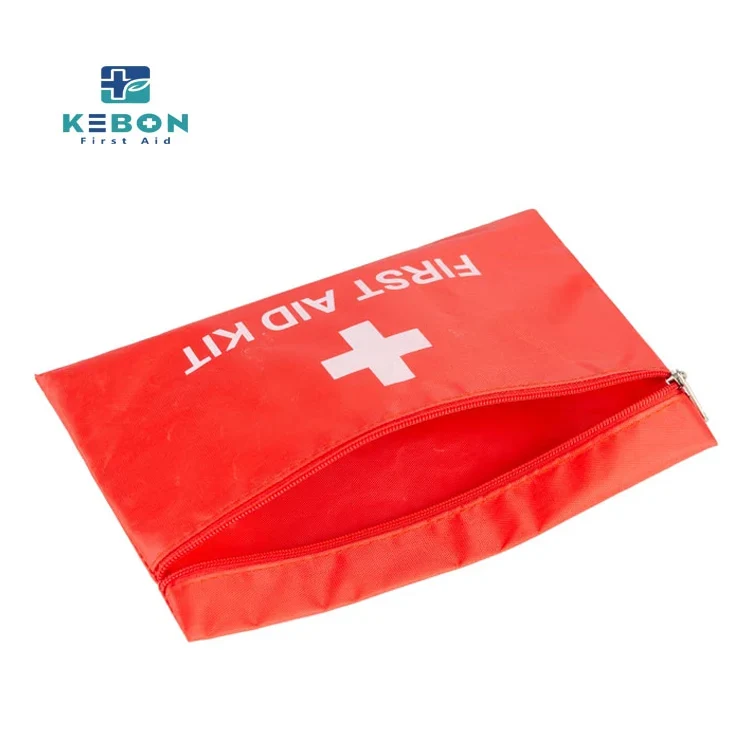What to Do if Your Pet Is in an Emergency While Traveling
2025-06-23
Traveling with pets can be a rewarding experience, but it also brings with it certain challenges, particularly in the case of an emergency. Whether you're on a road trip, flying across the country, or vacationing abroad, an emergency situation involving your pet can be overwhelming. Knowing how to respond quickly and effectively can help prevent further stress and even save your pet’s life. Here’s what you need to know and do in case of an emergency involving your pet while traveling.
1. Prepare for Emergencies Before You Travel
The best way to handle a pet emergency while traveling is to prepare ahead of time. Here are a few essential steps to take:
Veterinary Records: Keep a copy of your pet’s medical records, vaccination history, and any prescriptions with you. If your pet has pre-existing medical conditions, make sure to carry a list of medications, dosages, and any special care instructions.
Pet First Aid Kit: A well-stocked pet first aid kit should be part of your travel essentials. It should include basic medical supplies like gauze, antiseptic wipes, tweezers, bandages, and pet-safe medications.
Emergency Contact Information: Know the location of nearby veterinary clinics or animal hospitals at your travel destination. Many regions also have emergency pet hotlines or services. A quick online search or a recommendation from local pet owners or hotels can provide this information.
Pet Identification: Ensure your pet has proper identification. This includes a collar with an ID tag and a microchip if possible. In case your pet gets lost, this will increase the chances of a swift reunion.
2. Stay Calm and Assess the Situation
If your pet experiences an emergency while traveling, your first instinct might be to panic. However, staying calm is crucial to make effective decisions. Start by assessing the situation:
Is it a Medical Emergency? If your pet is exhibiting symptoms of illness (vomiting, lethargy, abnormal behavior), or has been injured (bleeding, limping, difficulty breathing), it’s important to assess the severity of the situation. Injuries like choking, bleeding, or difficulty breathing are immediate red flags.
Is it a Behavioral Issue? Sometimes, what seems like an emergency might be a behavioral issue like fear, stress, or anxiety due to unfamiliar surroundings or travel. For example, if your pet is trembling or hiding, it might be overwhelmed by the new environment rather than in physical distress.
3. Provide Immediate First Aid
If your pet’s condition warrants it, begin first aid while en route to the nearest vet or animal hospital. Some basic first aid steps include:
Bleeding: Apply pressure with a clean cloth or bandage to stop the bleeding. If the bleeding is from a limb, you can use a makeshift tourniquet above the injury to slow the blood flow, but don’t leave it on too long.
Choking: If your pet is choking and you can see an object blocking its airway, try to carefully remove it. You can attempt the Heimlich maneuver for pets by placing your hands just behind their ribcage and giving quick, sharp thrusts. If you’re unsure, it’s best to seek professional help immediately.
Shock: If your pet is in shock, keep them calm and warm. Avoid unnecessary handling and keep them in a comfortable position while seeking emergency care.
Burns or Heatstroke: If your pet is overheated, move them to a cooler location, and offer them small sips of water. Apply cool (not cold) water to their body to lower their temperature gradually.

4. Seek Immediate Veterinary Care
In the event of a medical emergency, don’t waste time trying to treat the problem alone. Get your pet to a veterinary clinic or emergency animal hospital as quickly as possible. If you're in a remote area and unable to get to a hospital immediately, call your emergency contacts for advice or look up nearby veterinary telehealth services.
Transporting Your Pet Safely: When transporting a pet in distress, ensure they are stable and as comfortable as possible. If your pet is injured or in shock, keep them immobilized in a safe carrier or on a flat surface to avoid exacerbating the injury.
Handling Severe Emergencies: If you're in an unfamiliar area, look up any emergency veterinary services online. Some cities or countries may have a 24/7 emergency pet care hotline.
5. Travel Insurance and Emergency Services
If you’ve purchased travel insurance for your pet, it may cover emergency veterinary services, including transportation to a nearby clinic or hospital. Check your policy before you travel to understand the coverage, as some policies may include emergency evacuation services.
Additionally, some airlines, hotels, and pet-friendly accommodations offer specialized emergency services for pets, so it’s worth inquiring beforehand.
6. Post-Emergency Care
After the emergency has been handled, it’s important to follow up on your pet’s recovery:
Monitoring: Continue to monitor your pet’s condition, and keep an eye out for any changes in behavior or health that could indicate complications.
Veterinary Follow-Up: Depending on the severity of the emergency, your pet may need additional veterinary care or follow-up appointments. If you’re traveling long-term, inquire about local vets at your destination and schedule any necessary appointments.
Reassurance and Comfort: Travel-related stress can often leave pets feeling uneasy even after an emergency is resolved. Provide them with plenty of comfort, and maintain a calm environment to help them adjust back to their routine.
7. Handling Travel-Related Stress or Injuries
Sometimes, emergencies arise due to the stresses of travel itself. Whether it’s motion sickness, anxiety, or disorientation from unfamiliar environments, managing your pet’s emotional well-being is just as important as addressing physical injuries. Regular breaks during travel, maintaining a consistent feeding schedule, and providing a safe space in their carrier can help minimize stress. If your pet has a history of travel anxiety, consider speaking to your vet before your trip about possible treatments.
Conclusion
Handling a pet emergency while traveling requires preparation, quick thinking, and effective action. By planning ahead with medical supplies, knowledge of local vets, and ensuring your pet’s safety with identification, you’ll be better equipped to deal with any situation. In any emergency, the key is to remain calm, assess the situation, and seek professional care as quickly as possible. Remember, with the right preparation and prompt response, most pet emergencies can be managed, allowing you and your furry friend to enjoy your travels with peace of mind.
As a professional manufacturer and supplier, we provide high-quality products. If you are interested in our products or have any questions, please feel free to contact us.


